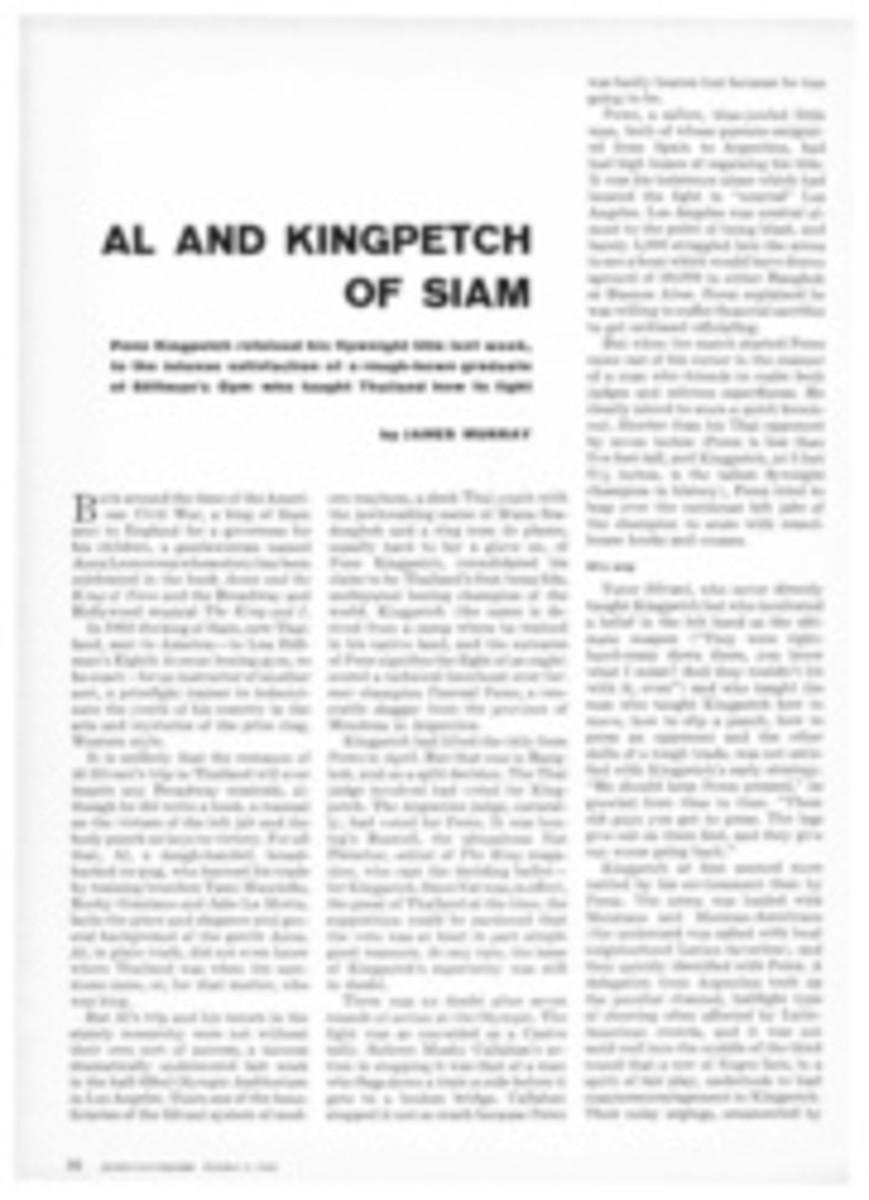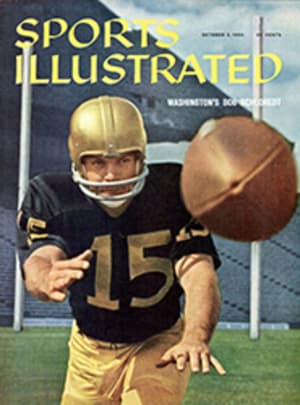
Compact with a flat floor
The car of the future, as some Detroit manufacturers saw it several years ago, would have enough power to light a small city, enough comfort to satisfy a hedonist and enough sheet metal and chrome to suggest an explosion in a jukebox factory. That awful day never arrived, fortunately, and last year, after numerous stuffy announcements that "the market was insufficient for smaller cars," three of the prophets came out with four compact automobiles. The Lark and two Ramblers were already on the market. This fall, five more compacts will be introduced in Detroit, bringing to an even dozen the number of American entries in the small-car field.
Of the new compacts, by far the most interesting is the Tempest, which Pontiac introduced this week. It is General Motors' first four-cylinder car in 33 years. It is also the very first front-engine passenger car to have a rear-mounted automatic transmission. The annoying bump in the front-seat floor that riders have had to straddle for years is all but gone.
The person responsible for this remarkable new car is Semon E. (Bunky) Knudsen, son of General William S. Knudsen, president of General Motors from 1937 to 1940 and during World War II head of the War Production Board. Bunky Knudsen is general manager of Pontiac and, until the leaders of the industry called a halt to stock-car racing and horsepower talk in June 1957, he was one of Detroit's leading hot-rod enthusiasts. Bunky now emerges from a litter of abandoned auto-race schedules with a car that is as exciting as the rear-engined Corvair was last autumn. The Tempest offers three engines: 1) a four-cylinder with single carburetor which will turn over 110 hp on a stick-shift transmission and 130 hp on automatic transmission; 2) a four-cylinder with four carburetors which require the higher-priced fuels but develops 155 hp; 3) an eight-cylinder aluminum engine, borrowed from corporate brothers at Buick and Oldsmobile, which will also generate 155 hp.
Four-cylinder engines are not new to the U.S. Many early American cars, including the Model A Ford and the old Chevy, had fours. So did the Henry J. and the Crosley, and the Jeep has always had fours, as have most European imports. The best U.S. four, however, is a racing engine, the Offenhauser, used in most Indianapolis "500" winners.
Bunky Knudsen named his engine the "Indianapolis Four" after the Offenhauser, but it was for economic reasons that he decided to use the four. The Tempest engine actually is a modification of the right bank of the current and hot Pontiac V-8, inclined at 45°. Many of the four's parts are interchangeable with the V-8, and both the Tempest four and the V-8 can be built on the same production line.
Previous fours were said to be rough operators at low speeds and in pulling loads. This was not true of the prototype Tempest I drove recently at the General Motors Proving Ground at Milford, Mich. This Tempest had an automatic transmission and four carburetors. It accelerated very well, going from 0 to 60 mph in 14.3 seconds, and its passing gear, operative in the 45-to-55-mph range, was all anybody could hope for. At 90 mph, the engine promised more speed. The car took curves handily at 75 and 80 mph. At 60 mph on rough gravel and chuckhole pavements the car handles well.
The Tempest stops more easily than most cars because of its favorable weight distribution—50% in front, 50% in the rear. This was achieved by mounting the transmission (a heavy unit in any car) in the rear via a transaxle, so called because the transmission and axle are joined to form a composite unit. In the Tempest and Corvair and in other smaller cars, this axle is "swung" from the universal joint and differential, which are fixed to the floor of the car. The arrangement makes for independent rear suspension, with each rear wheel on its own. If the right rear wheel hits a bump, it takes the brunt of the shock but does not transmit it to the other rear wheel. The net effect is a smoother ride.
But the most laudable engineering first in the Tempest is the flexible drive shaft (see drawing) from the front-mounted engine which permits the transmission to be mounted in the rear. This drive shaft reduces the familiar hump and tunnel inside the car which usually jam a lanky passenger's knees up against his nose. Mechanically speaking, the torque tube around this unique drive shaft also helps smooth out the inherent roughness of the four-cylinder engine.
The Tempest on the inside is traditionally American in its features and comfort. Attractively trimmed, it has a thumb-operated shift for automatic transmission and a floor-mounted stick for manual. Power steering (though it isn't needed) and even air conditioning are available. With a minimum hump, three people can honestly sit up front. Headroom is fine (38.3 inches in front, 37.1 in the rear). Outside, the grille is the twin-looped affair Pontiac has found so successful. Sheet-metal lines are crisp, chrome is spare and the single-barrel carburetor model gets about 22 miles to the gallon.
The Tempest can be labeled "compact"—a word American Motors considers precious—but this car is as large as or larger than many cars of 20 years ago. Its wheelbase is 112 inches, its length 189.3 inches, its width a generous 72.2 inches, and shipping weight is about 2,800 pounds. With a starting price of about $2,500, the Tempest is in the right market. It is powerful and roomy enough to serve as a family car. Its technical innovations, which earn justified admiration, are interesting enough to attract the buyer with romance in his soul. He has a choice between a four-door sedan and a station wagon.
If the public should prove wary of the four-cylinder engine—and there is small cause for such an attitude—Knudsen has the eight-cylinder car, but he is playing it down. "We've got the right thing going here," he says of his Indianapolis Four. "And the 'rope' [flexible drive shaft] drive, the engine and the rear-mounted transmission will point the way to the future."
ILLUSTRATION
4-CYLINDER INCLINED ENGINE 110-130-155 HP
FLEXIBLE DRIVE SHAFT
TRANSMISSION
DIFFERENTIAL
SWING AXLE
PHOTO
TEMPEST STATION WAGON HAS SAME GRILLE DEVELOPED FOR REGULAR PONTIAC LINE

